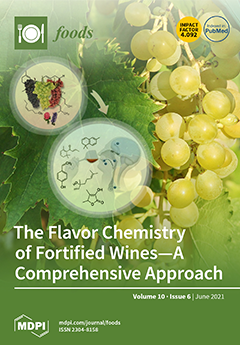Extensive pig systems are gaining importance as quality production systems and as the standard for sustainable rural development and animal welfare. However, the effects of natural foods on
Salmonella epidemiology remain unknown. Herein, we assessed the presence of
Salmonella and the composition of
[...] Read more.
Extensive pig systems are gaining importance as quality production systems and as the standard for sustainable rural development and animal welfare. However, the effects of natural foods on
Salmonella epidemiology remain unknown. Herein, we assessed the presence of
Salmonella and the composition of the gut microbiota in pigs from both
Salmonella-free and high
Salmonella prevalence farms. In addition, risk factors associated with the presence of
Salmonella were investigated. The pathogen was found in 32.2% of animals and 83.3% of farms, showing large differences in prevalence between farms. Most isolates were serovars Typhimurium monophasic (79.3%) and Bovismorbificans (10.3%), and exhibited a multi-drug resistance profile (58.6%). Risk factor analysis identified feed composition, type/variety of vegetation available, and silos’ cleaning/disinfection as the main factors associated with
Salmonella prevalence. Clear differences in the intestinal microbiota were found between
Salmonella-positive and
Salmonella-negative populations, showing the former with increasing
Proteobacteria and decreasing
Bacteroides populations. Butyrate and propionate producers including
Clostridium,
Turicibacter, Bacteroidaceae_uc, and
Lactobacillus were more abundant in the
Salmonella-negative group, whereas acetate producers like
Sporobacter,
Escherichia or
Enterobacter were more abundant in the
Salmonella-positive group. Overall, our results suggest that the presence of
Salmonella in free-range pigs is directly related to the natural vegetation accessible, determining the composition of the intestinal microbiota.
Full article






